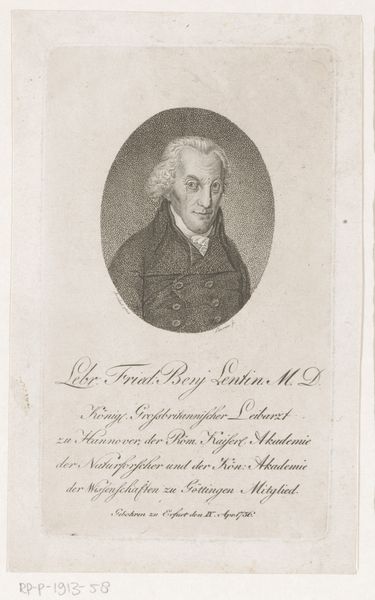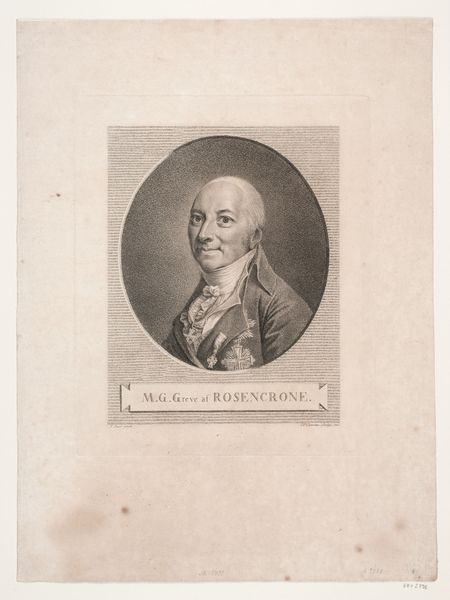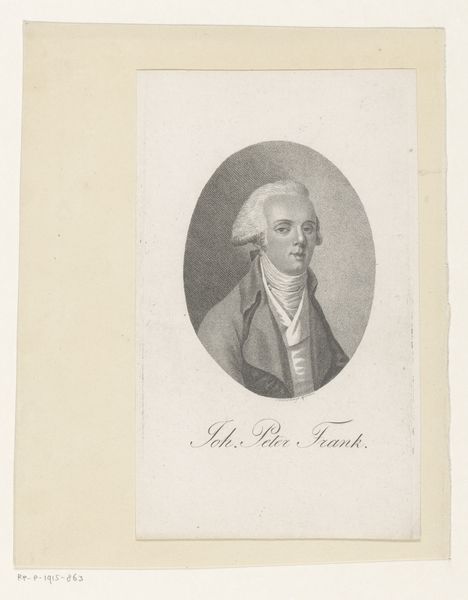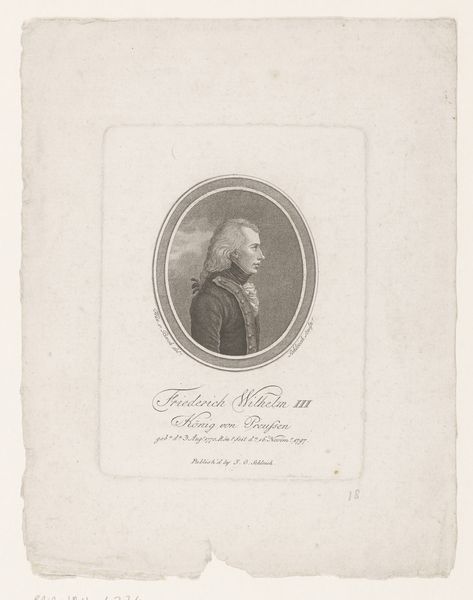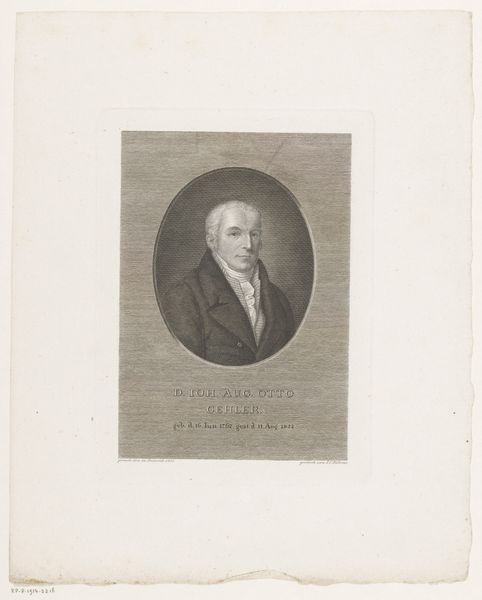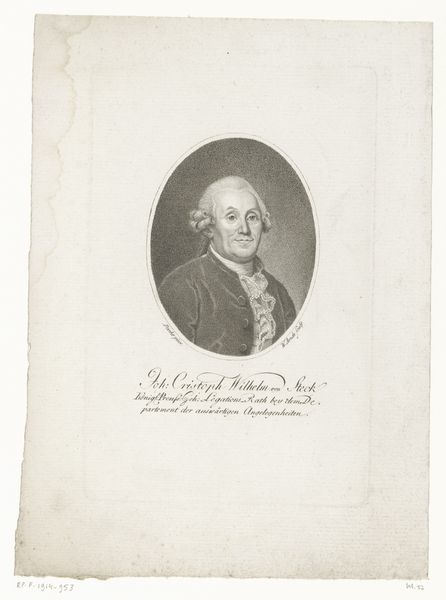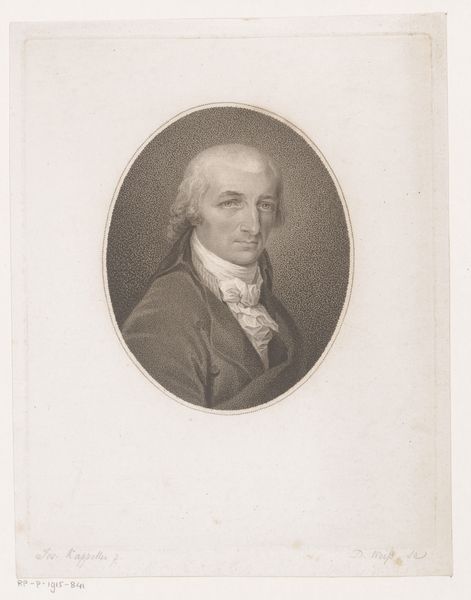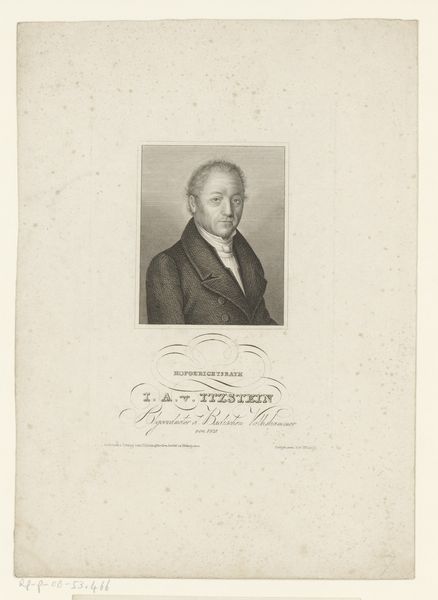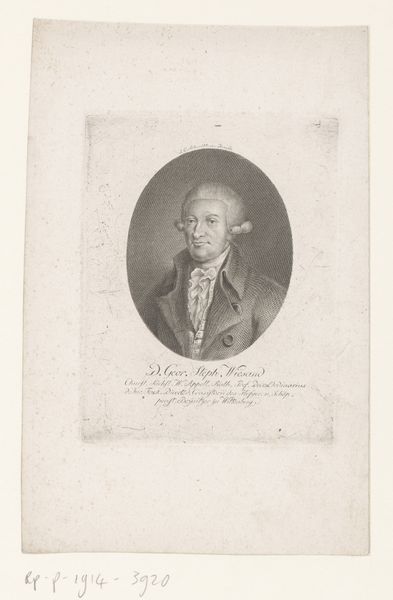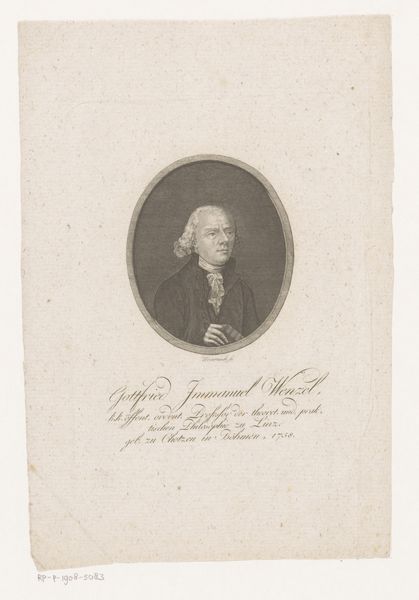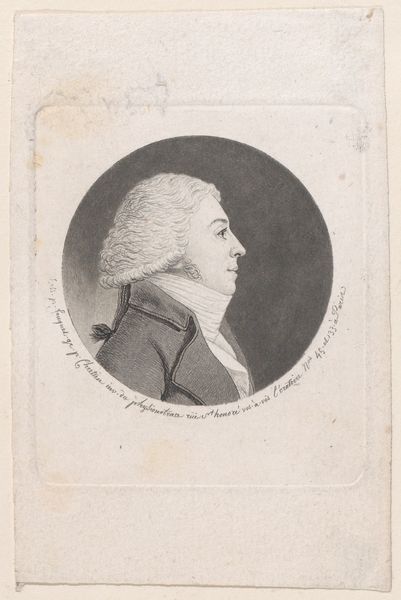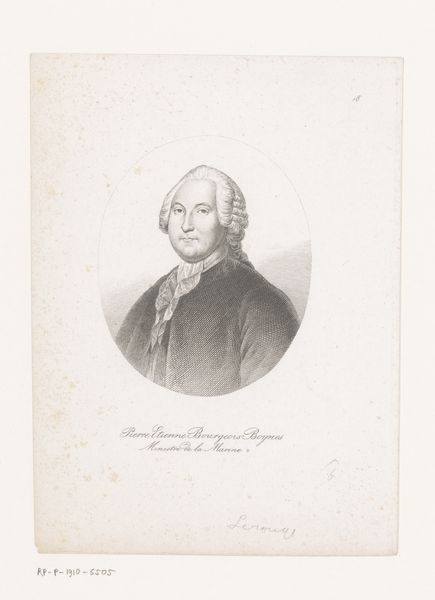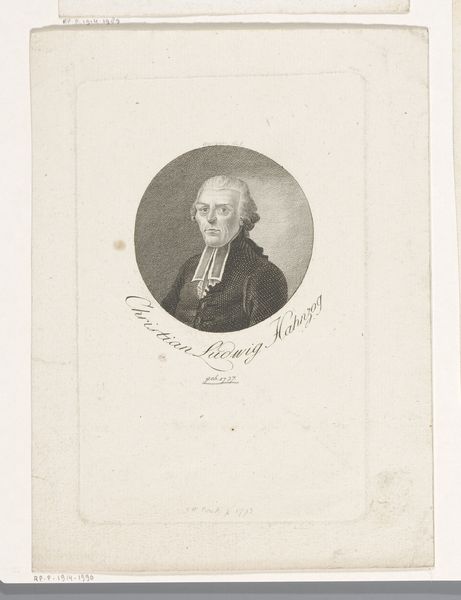
print, engraving
#
portrait
#
neoclacissism
# print
#
line
#
engraving
Dimensions: height 171 mm, width 112 mm
Copyright: Rijks Museum: Open Domain
Editor: This is a portrait of Johann Peter Frank, an engraving from 1800 by Friedrich Wilhelm Bollinger, currently held at the Rijksmuseum. The stark lines and oval composition give it a very formal, almost severe, feel. What do you see in this piece? Curator: I observe a masterful handling of line and tone. The engraving technique lends itself to the sharp delineation of form. Note the precise control in rendering the texture of the sitter’s coat and wig, achieved through the strategic placement and density of etched lines. The composition, constrained within the oval, emphasizes a hierarchical structure: the figure above, text below, separated by space, leading our eyes downward. Editor: So, the medium really dictates the message? Curator: In part. The print medium allows for dissemination and reinforces Frank's status as an important public figure. Moreover, consider the lack of color: this absence compels the viewer to focus on form and the skill of the engraver. Semiotically, we may examine the formal elements. What visual signifiers denote rank or distinction? Editor: Well, his powdered wig and formal coat suggest status, as does the neat lettering beneath. I hadn't considered the lack of color as significant. Curator: Precisely. It compels us to analyze what is *present*. Formally, this piece excels in its execution, using minimalist means to maximum effect in the clear rendering of status. A true example of Neoclassical restraint. Editor: That's fascinating! I'll definitely look at prints with a new appreciation for the formal elements and their impact on meaning now. Curator: And I shall think on the semiotic weight even a minimalist structure can bear!
Comments
No comments
Be the first to comment and join the conversation on the ultimate creative platform.
